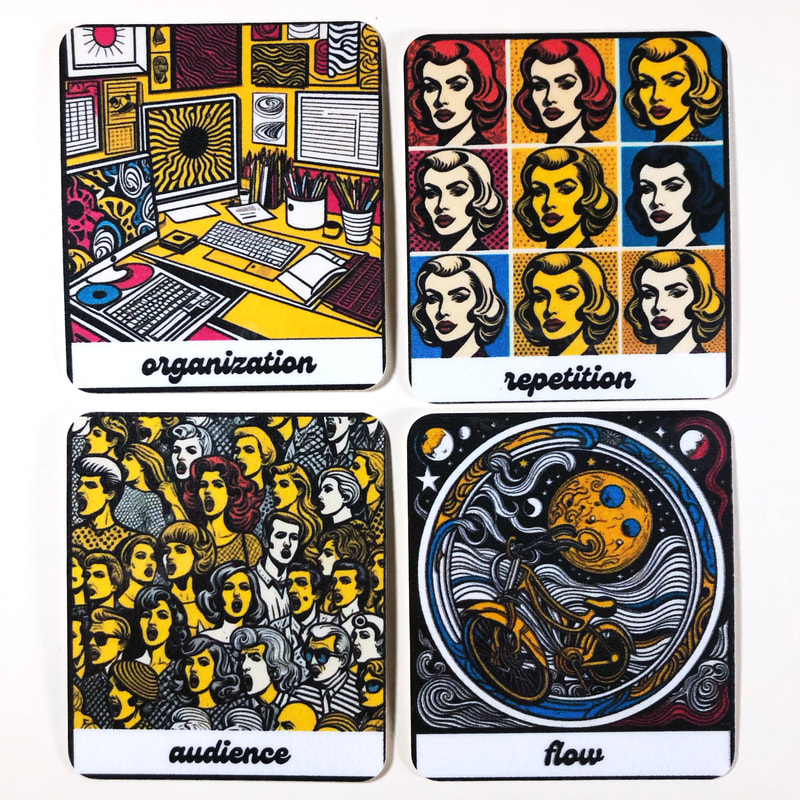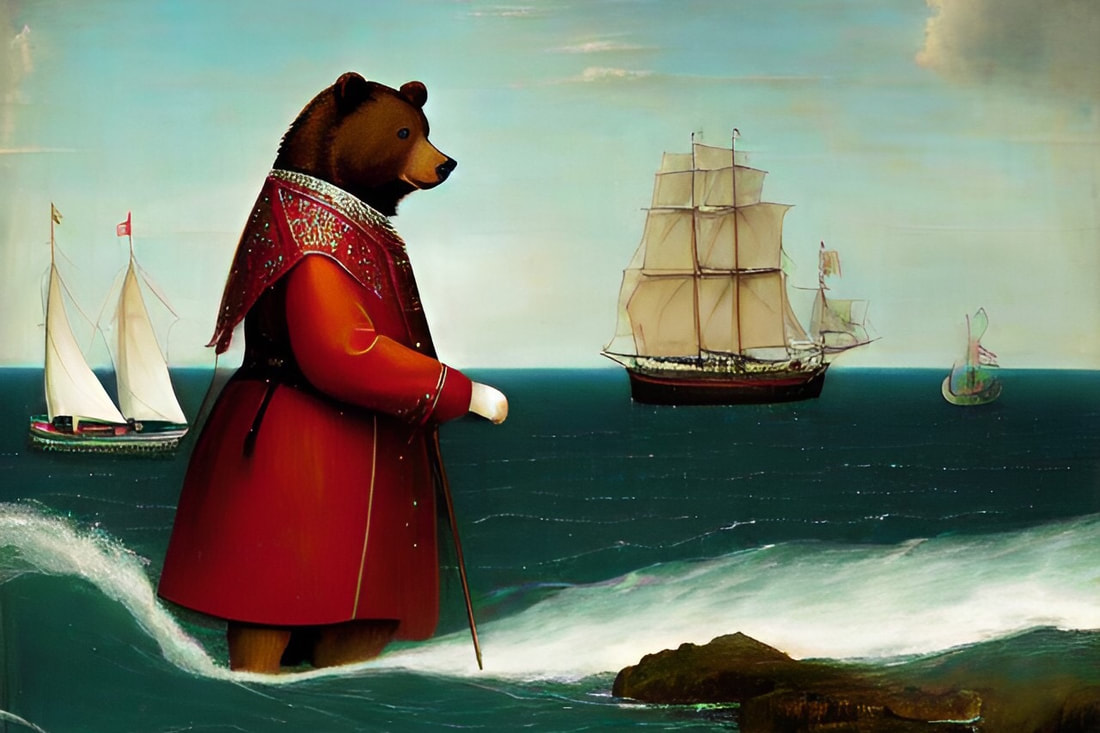|
In this handwriting sample, I found a few potential creative blocks:
Recommendations:
Would you like for me to assess YOUR biggest creative block? Send me a handwriting sample and I may use it in this series. Begin with a piece of computer paper or other unlined paper and your favorite type of pen. Hand write a paragraph or more about your biggest creative block. Take a photo of the page and email it to [email protected] with the subject: Creative block handwriting.
4 Comments
Last weekend, I co-facilitated the Deck Creator's Mastermind (DCM), led by Kiala Givehand. The DCM shows you all the ways to create, publish, and sell the oracle deck of your dreams. One of my favorite aspects to teach is deck concept. The deck concept goes beyond just a deck idea and really hones in on the WHY behind making a deck. Each year that I've participated in DCM, it's become more and more clear to me that deck creating isn't just a creative process. It's a self-discovery process and, more importantly, a shadow-work process. Shadow is the stuff we wrestle with, that presents us with more questions than answers. It's what we don't see or are in denial about. It's when we feel stuck or when life feels hard and we get overwhelmed. Shadow work, however, is the work of facing the shadow stuff. It's confronting the heavy emotions and repeated unproductive patterns. Shadow work challenges us to witness our wholeness and not just the parts we want the world to see. Here are a few truths about shadow work and the deck-making process: (1) You can't make a deck that does not reflect you. Everything you create, especially an oracle deck, reflects you at that moment in time. And if you're wise, you'll look deep into the depths of that deck and discover yourself, your biases, and your fears, in the process. (2) Your deck concept reveals your current shadow work project. The deck you're trying to bring into the world has elements or themes of your current challenges. For instance, if your deck is about speaking up and using your voice, that's your biggest obstacle at the moment. If your deck promotes greater authenticity, that's what you're trying to integrate. Writing an honest deck concept will help you figure this out. Answer these questions:
(3) Lack of self-acceptance may be what's blocking you from completing your deck. If you cannot accept the shadow stuff your deck is bringing up, it will be difficult, if not impossible, to complete the deck. For instance, if you cannot seem to complete your deck that helps others with body esteem, it may be that, unconsciously, your own body esteem issues are the block. The deck may not progress until you do your shadow work and address, or at least acknowledge, the underlying issues. Last week, I made two personal oracle decks: Creative Compass Oracle and Black Gurl Magic Oracle. The Creative Compass Oracle is a deck that keeps evolving. This is the 5th version of it and it still feels incomplete. It's a deck reflecting the creative process. It answers questions about why you may be encountering blocks on your creative journey and offers ways to resolve them. Every card is presented in a positive light or as solutions to creative problems. I've been developing it as a way to better understand my creative process so I can help others with their creative process. It has the word "compass" in the name because my intention is that it's a tool that can help you determine your creative direction. But that's also my shadow work. I'm unsure of what my creative direction is at this stage in life. So, my deck evolves as I reach new states of awareness and understanding in this area. Black Gurl Magic Oracle features abstracts of Black women dancing, to reflect the ability of Black women to rise above suffering and pain. This is a poetry divination deck and the keywords are from 7 poems from 7 contemporary Black female poets. When you string a row of cards together, you'll create an original poem reflecting the soul of Black women. This deck is an antidote to the daily heaviness I feel for myself and other Black women, who seem to always be at the bottom of the world's hierarchy, "the mule of the world" to quote Zora Neale Hurston, and everyone's scapegoat. I am striving to dance through it with my head in the air, like these beautiful Black queens.
If you have an urge to create an oracle deck, just remember there's an internal process at work. It's not just about finding art and choosing a few keywords. I believe deck-making is a way to assist in your soul's evolution. When you complete the deck, you'll have the sense of opening up to a bigger version of yourself. What is your biggest creative block? In this video, I examine handwriting to uncover the root of a creative block. In this handwriting sample, I found a few potential creative blocks:
Recommendations:
Would you like for me to assess YOUR biggest creative block? Send me a handwriting sample and I may use it in this series. Begin with a piece of computer paper or other unlined paper and your favorite type of pen. Hand write a paragraph or more about your biggest creative block. Take a photo of the page and email it to [email protected] with the subject: Creative block handwriting.
Creativity and technology have always had a complex relationship. On one hand, technology has made it easier for creatives to bring their ideas to life, while on the other hand, it has been seen as a threat to the creative process. However, with the advent of more and more AI (artificial intelligence) tools, creatives can now leverage technology to enhance their creativity, and here’s how. (1) AI tools remove the barriers between ideas and reality. With the help of AI tools, creatives can now easily bring their imaginative ideas to life, without being limited by their lack of technical skills. These tools can generate realistic images, sounds, and even entire virtual worlds based on the specific input. (2) AI tools can automate repetitive tasks, freeing up more time for creative work. For example, tasks such as photo editing, resizing, and formatting images can be automated with AI tools, allowing creatives to focus on more important and less time-consuming tasks. (3) AI tools can help creatives boost their social media presence. AI tools can analyze the language, tone, and structure of a creative's blog post or social media update and suggest changes that would make it more engaging and effective. An AI tool could also analyze social media trends and suggest a new approach to a marketing campaign. (4) AI tools allow creatives to collaborate freely. Through the use of AI, creatives can work together on projects, regardless of their location. AI tools can facilitate communication, file sharing, and project management, making collaboration more efficient and effective. AI tools can be a valuable asset to creatives. With AI, it is now possible to quickly and accurately analyze vast amounts of data, identify patterns and trends, and make predictions about future outcomes with a high degree of accuracy. While it may not replace human creativity, it can certainly enhance it. As technology continues to advance, it will be interesting to see how AI tools evolve and how creatives will leverage them. This is the best explanation of generative AI art I've found so far! I'm leading a discussion/demo on using AI for deck creators in the Deck Creator's Mastermind with Kiala Givehand, which begins August 11, 2023. Click HERE for details.
|
Soul Stories BlogUnearthing soul stories through creativity and symbolism. Archives
November 2023
Categories
All
|










 RSS Feed
RSS Feed
